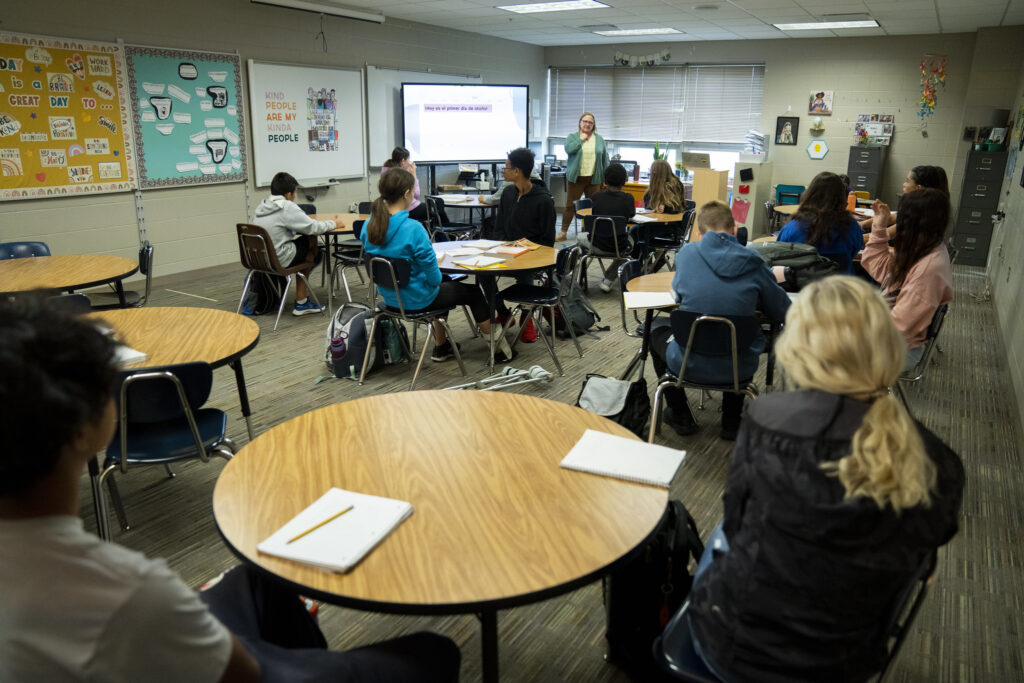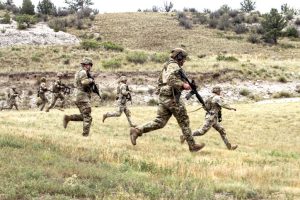Students attend class. (Courtesy of Sioux Falls School District)
The South Dakota Department of Education deserves a failing grade, according to one of the lawmakers tasked with performance management reviews of state agencies.
Senate President Pro Tempore Chris Karr, R-Sioux Falls, called the department’s review the “worst performing report that we have” and said Department of Education Secretary Joe Graves faces an “uphill battle.”
The Legislature’s Government and Operations Audit Committee reviewed the report Thursday at the Capitol in Pierre. The report measures the department’s success at improving public school student performance against goals in reading and math proficiencies, attendance, Native American student success and college and workforce preparedness.
The department didn’t reach any of the report’s target performance outcomes in the last fiscal year.
For the past five years, the department hasn’t reached its target performance outcomes for reading proficiency, math proficiency, Native American student success or absenteeism. The last time the department met a target for college and career readiness was in fiscal year 2021.
English and language arts
The department measures third grade English and language arts proficiency rates and elementary and middle school state assessment growth rates.
The proficiency rate indicates what percentage of students can read at grade level, while the growth rate measures whether students will stay proficient later in their education.
During the 2024-2025 school year, just under 45% of students tested proficient in English and language arts. The department aimed for just under 55%.
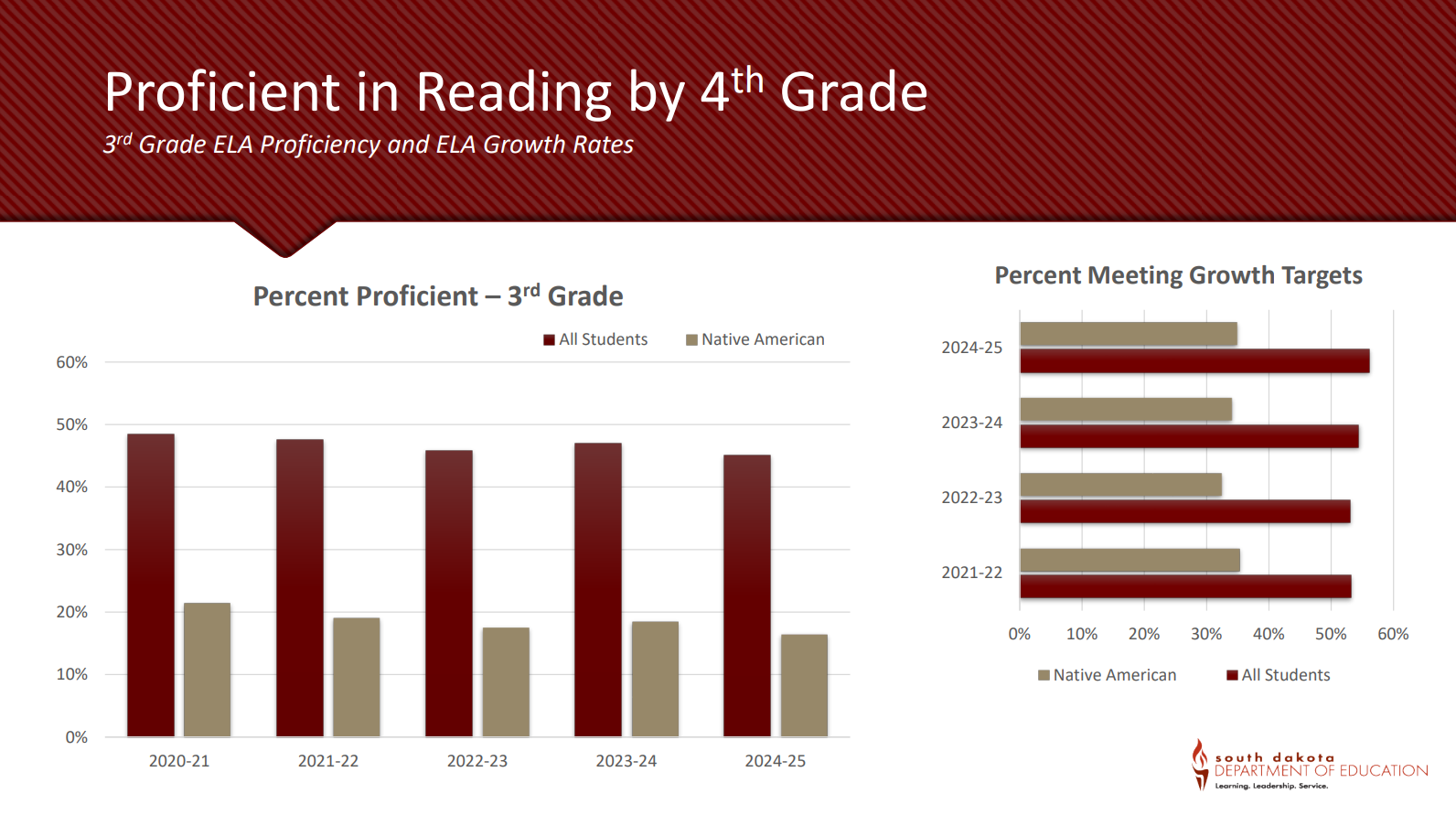
When lawmakers pressed Graves about the gap in proficiency, he told lawmakers that South Dakota implements “really rigorous expectations” for proficiency, which can lead to lower scores.
The student growth rate was 56%, short of the 61% target.
Graves said he expects statewide implementation of the Science of Reading principles, which focus heavily on phonics, will improve student literacy rates and test scores in the coming years. The state Board of Education included the principles in revisions to English and language arts standards earlier this year.
Eighth grade math proficiency
The department’s math goals use eighth grade math proficiency rates on the state assessment and math growth rates for elementary and middle school students.
Nearly 42% of eighth graders tested proficient in math last school year, missing the 54% target. Students’ growth rate came in at just under 51%, under the 58% goal.
Despite that, Graves noted, South Dakota ranks sixth in the nation for math proficiency at the eighth grade level, based on the National Assessment of Educational Progress. It ranks 17th for fourth grade proficiency.
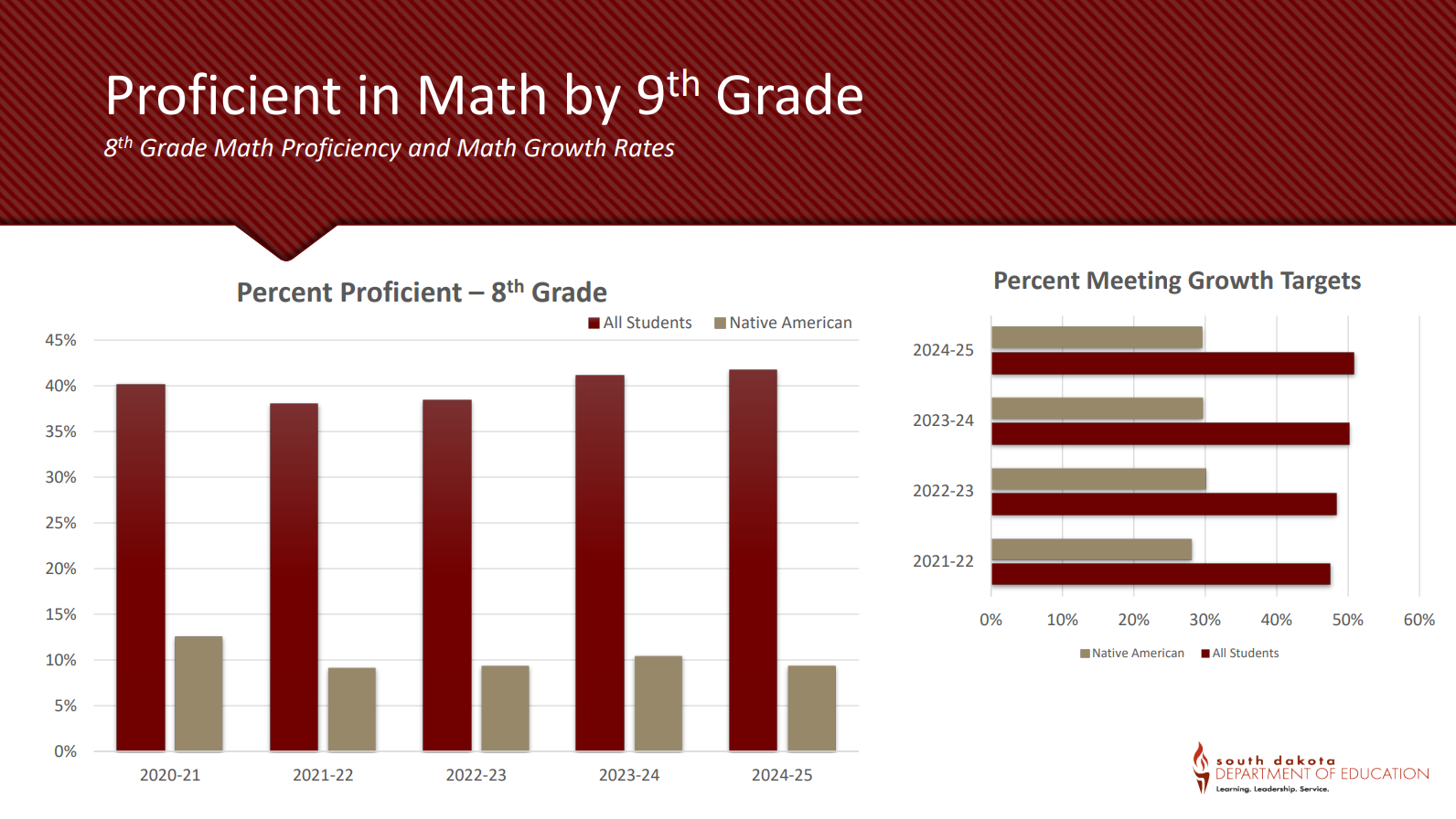
The department proposed new math standards this year, meant to simplify what standards need to be taught — especially at the elementary school level. Some math educators are raising concerns that the changes oversimplify the standards, which could make it harder for teachers to know what exact mathematical skills students need to exhibit by the end of the year. The proposed standards are still under review.
Native American student success
Native Americans comprise the largest minority in South Dakota, and Native American students face some of the starkest disparities in academic achievement compared to their peers.
The third grade English and language arts proficiency rate among Native Americans last school year stood at 16%. Eighth grade math proficiency stood at 9%. Both goals were over 54%.
Growth rates, graduate rates and college and career readiness among Native American students were also significantly below their targets.
Graves said he’d hoped a movement to introduce Education Savings Accounts in South Dakota would help educators to “innovate” and address the problems. But the measure, which would have provided public funding for private education and homeschool options, failed during the last legislative session.
Traditional solutions, Graves said, especially federal funding distributed to school districts serving high populations of Native American students, have “never achieved the kind of results we would hope for.”
South Dakota’s attendance rate stood at 88% of students attending at least 90% of enrolled days the last school year. Among Native American students, attendance has hovered between 50% and 60% during the last five years.
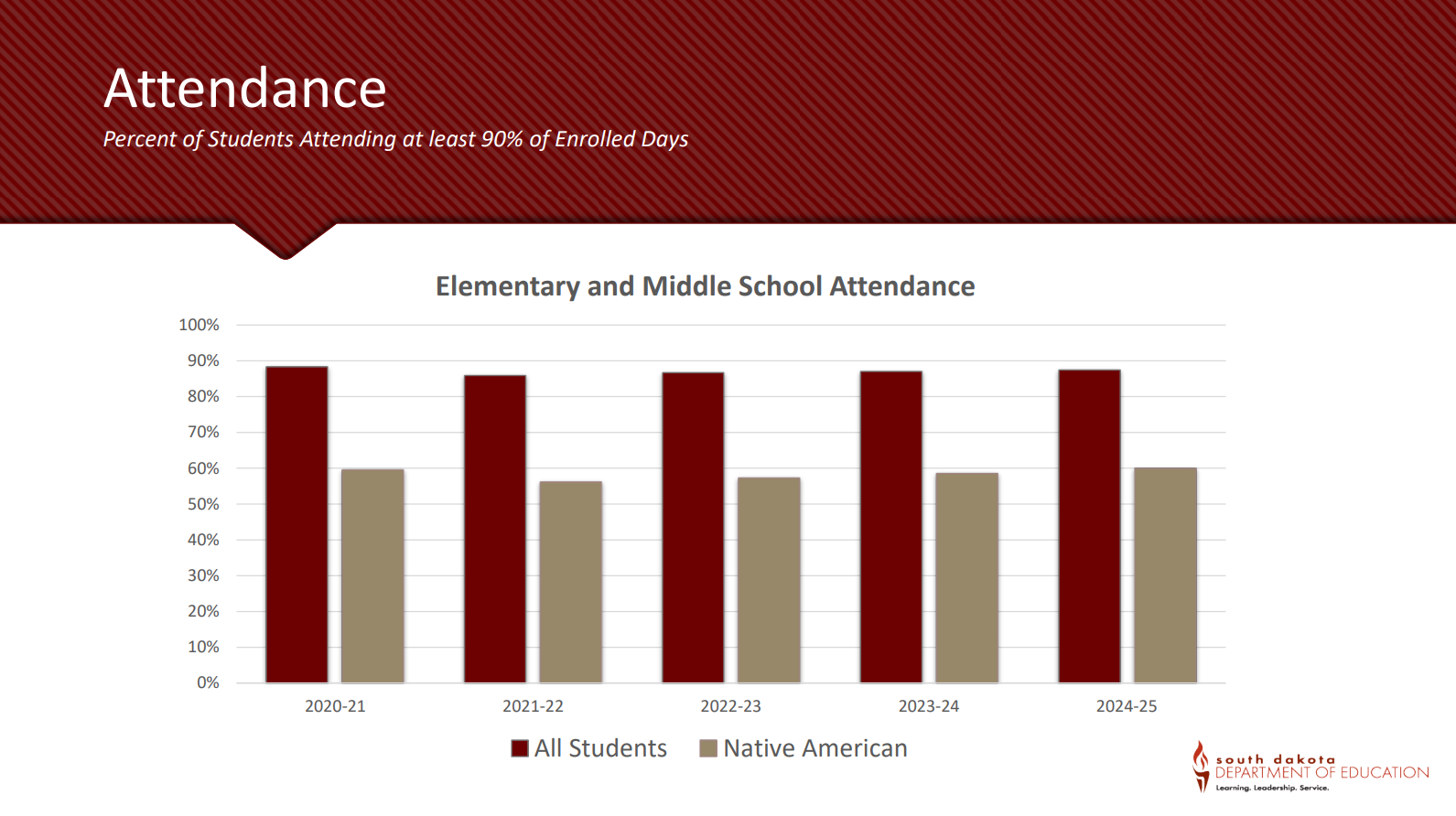
The state department awarded grants to several school districts across the state in 2024 to target absenteeism rates. While in their second year of the grant, Graves said some districts have seen “some improvement.” Overall, the progress is “disappointing.”
“We were hoping for a faster recovery and a greater improvement in attendance at this point in time,” Graves told lawmakers.
Graves added that he expects most of the attendance programs initiated because of the grants will go away once funding ends.
College and career readiness
The department also missed its targeted four-year graduate rate, math and English proficiency rates indicating college readiness, and workforce readiness rate targets. The outcomes were closer to their targets than in other areas of student achievement.
The department plans to use a “more comprehensive look” at college and workforce readiness measures in coming years, based on the report, rather than basing it only on test scores.
Graves highlighted a school program that works primarily with low-income or other marginalized groups of students to prepare students for postsecondary education or the workforce. About 99% of students involved in South Dakota Jobs for America’s Graduates chapters in the state graduated from high school. About 98% of program graduates in 2024 went on to attend college or technical schools. The other 2% were enrolled in a certificate program or Job Corps training.
But the program includes “considerable expense at the state and local level” to implement, which limits what schools take part. He added that the state is seeking sponsorships to grow the program.
“I’m convinced that it could really balloon in South Dakota,” Graves said.
GET THE MORNING HEADLINES.


